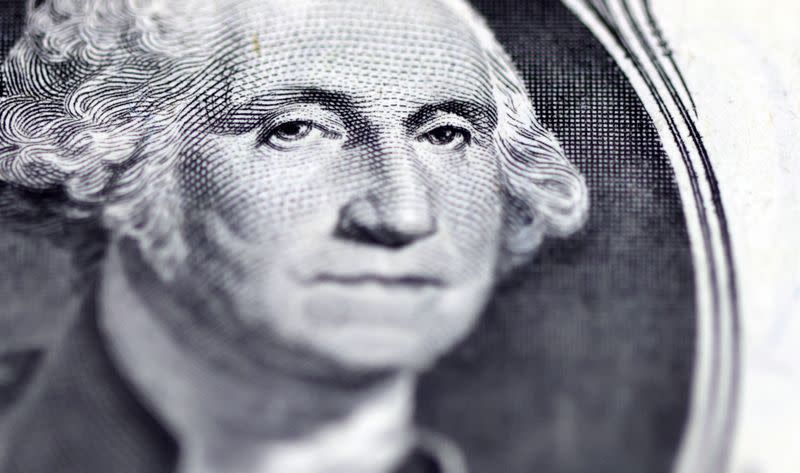Dollar crumbles vs yen, in line with Treasury yields, as U.S. growth falls in Q2
By Karen Brettell and Gertrude Chavez-Dreyfuss
NEW YORK (Reuters) - The dollar dropped to a six-week low against the yen on Thursday, tracking the decline in Treasury yields, after data showed the U.S. economy contracted again in the second quarter, fueling speculation that the Federal Reserve will not raise rates as aggressively as previously expected.
The greenback posted its largest daily percentage fall against the yen since mid-March 2020. In the U.S. Treasury market, two-year yields, which reflect interest rate expectations, fell to a three-week low. From its peak on Wednesday, the two-year yield has declined by 24 basis points.
Data showed on Thursday that gross domestic product fell at a 0.9% annualized rate in the second quarter. Consumer spending grew at its slowest pace in two years and business spending contracted, raising the risk that the economy was on the cusp of a recession. Economists polled by Reuters had forecast GDP rebounding at a 0.5% rate.
U.S. Treasury Secretary Janet Yellen on Thursday did not rule out a possible recession, but refused to concede that one was under way after two quarters of GDP contraction - a shorthand definition often used by economists, journalists and market analysts.
The data came a day after the Federal Reserve raised interest rates by another 75 bps to stamp out inflation.
The Fed's action, coupled with earlier moves in March, May and June, has lifted the central bank's overnight interest rate from near zero to a level between 2.25% and 2.50%. That is the fastest tightening of monetary policy since former Fed Chair Paul Volcker battled double-digit inflation in the 1980s.
"The weak GDP clearly points to a slowing economy. We think softer inflation will follow softer growth," said Vassili Serebriakov, FX strategist at UBS in New York.
"Once that happens, the market will see the end of the tightening cycle and that will probably hurt the dollar primarily against the yen, just because that's the currency pair that tracks U.S. inflation and rate expectations the closest." he added.
In afternoon trading, the dollar sank 1.7% to 134.22 yen after earlier plunging to a six-week trough of 134.20 yen.
Fed funds futures traders on Thursday have priced in a lower benchmark rate of 3.25% in December, compared with 3.4% before the Fed decision on Wednesday. The market has also factored in just 92 bps of cumulative tightening by the end of 2022, from 108 bps before Wednesday's Fed announcement.
At the next Fed meeting in September, the rates market has priced in a 76% chance of a 50-bps rate rise.
The greenback had dipped on Wednesday after the Fed's 75-bps rate increase as the move was widely anticipated, while comments from Fed Chair Jerome Powell spurred hopes for a slower hiking path.
Against a basket of major currencies, the dollar slipped 0.2% to 106.13 on Thursday. It has fallen from 109.29 on July 14, which was the highest since September 2002.
The euro was last little changed at $1.0199. It traded as low as $0.9952 on July 14, the weakest since December 2002, hurt by concerns about the region's energy crisis.
"The weaker the gas supply to Western Europe, the greater the risk of the bloc economy descending into recession, a scenario that could limit scope for the ECB (European Central Bank) to raise rates to counter record inflation," said Joe Manimbo, senior market analyst at Western Union Business Solutions in Washington.
(The story refiles to correct spelling in analyst name in 7th paragraph.)
(Reporting by Karen Brettel and Gertrude Chavez-Dreyfuss in New York; Additional reporting by Saikat Chatterjee in London; Editing by Nick Zieminski and Matthew Lewis)

 Yahoo Finance
Yahoo Finance 

